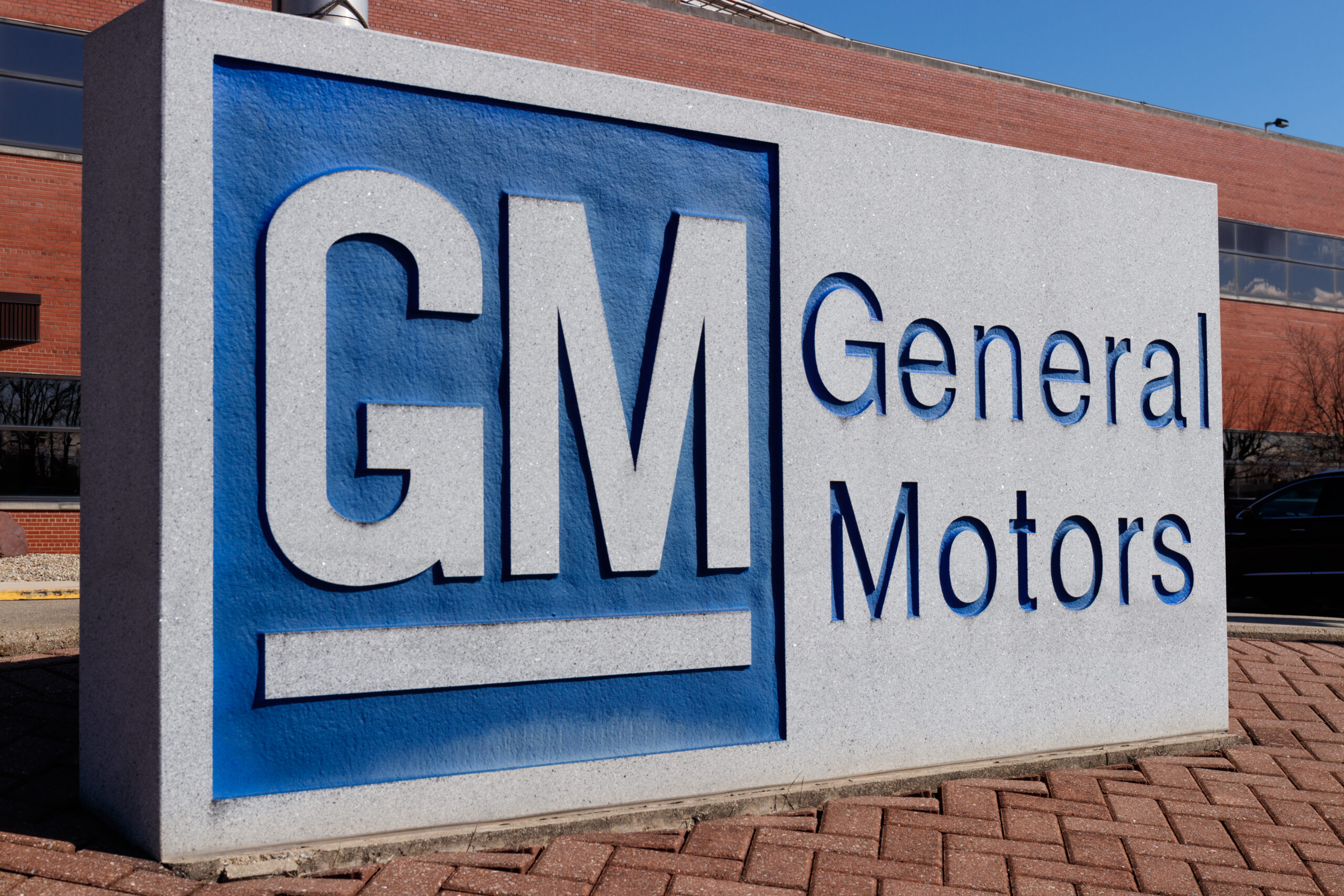What will the future of traditional car manufacturers be as the automotive sector evolves? General Motors’ (GM) recent announcement to cut over 1,000 software engineering jobs serves as a stark reminder of the industry’s shifting priorities. This strategic move underscores the company’s commitment to streamlining operations and reallocating resources toward electric and autonomous vehicle development. Considering the implications of this decision, it’s crucial to understand how it fits into the broader context of GM’s long-term vision and the challenges facing established automakers in an increasingly tech-driven market.
GM to Cut Over 1,000 Software Engineering Jobs

General Motors’ decision to reduce its software engineering workforce by more than 1,000 employees marks a significant shift in the company’s strategy. This move, primarily affecting U.S.-based positions, reflects GM’s efforts to streamline operations and reallocate resources in an increasingly competitive automotive landscape.
GM: Reasons Behind the Layoffs
The automotive industry is experiencing a rapid transformation, with a growing emphasis on electric and autonomous vehicles. GM’s workforce reduction is a direct response to these changes, as the company aims to:
Consolidate software development efforts
Optimize resource allocation
Focus on high-priority projects
By streamlining its software engineering team, GM can better position itself to tackle the challenges of developing next-generation vehicle software platforms.
Impact on GM’s Future
This strategic shift underscores GM’s commitment to staying at the forefront of automotive innovation. By reallocating talent and resources toward critical projects, the company aims to:
Accelerate the development of electric and autonomous vehicle technologies
Enhance its competitive edge in the rapidly evolving automotive market
Improve overall operational efficiency
While the layoffs may be challenging for affected employees, they represent GM’s proactive approach to adapting to industry changes and securing its long-term success in the automotive sector.
GM To Focus on EVs and Autonomous Driving Tech
As the automotive industry undergoes a seismic shift, General Motors is doubling down on its commitment to electric vehicles (EVs) and autonomous driving technology. This strategic pivot reflects the company’s recognition of these technologies as the future of transportation.
Accelerating GM And Its EV Development
GM has ambitious plans to expand its electric vehicle lineup. The company is investing billions in developing new EV platforms and battery technologies. By 2025, GM aims to launch 30 new electric models globally, covering a wide range of vehicle segments from compact cars to full-size trucks.
Advancing Autonomous Capabilities
Alongside its EV push, GM is making significant strides in autonomous driving technology. Through its subsidiary Cruise, the company is working on self-driving vehicles for ride-hailing and delivery services. GM’s Super Cruise hands-free driving system is also being refined and expanded to more vehicle models.
Reallocating Resources
To support these initiatives, GM is reallocating its workforce and resources. The recent software engineering layoffs, while difficult, are part of this strategic realignment. GM aims to streamline operations and focus talent on high-priority projects in the EV and autonomous driving space.
This shift underscores GM’s commitment to staying competitive in a rapidly evolving automotive landscape. As traditional automakers face increasing pressure from tech-focused newcomers, GM’s strategic focus on EVs and autonomous tech positions the company to remain a leader in the industry’s next chapter.
Streamlining Operations and Reallocating Talent
Optimizing Resource Allocation
GM’s decision to cut over 1,000 jobs is part of a strategy to streamline operations and focus on high-priority projects. This move allows the company to reallocate talent and resources towards critical areas such as electric and autonomous vehicle development. GM aims to create a more efficient and agile workforce capable of meeting the evolving demands of the automotive industry.
Focusing on Next-Generation Technologies
The strategic shift reflects GM’s commitment to staying competitive in an increasingly technology-driven market. By redirecting resources towards the development of next-generation vehicle software platforms, the company is positioning itself at the forefront of automotive innovation. This focus on cutting-edge technologies is essential for GM to maintain its edge in areas like electric propulsion, advanced driver assistance systems, and connected vehicle services.
Balancing Short-Term Challenges with Long-Term Goals
While the job cuts may present short-term challenges, they are aligned with GM’s long-term vision for growth and sustainability. The company also makes difficult decisions to ensure it remains adaptable and responsive to market trends. By optimizing its workforce and concentrating on key areas of innovation, GM is laying the groundwork for future success in an increasingly competitive and rapidly evolving automotive landscape.
Impact on US Workforce Due To GM Job Cuts
Immediate Job Losses
The decision by General Motors to cut over 1,000 software engineering jobs will have a significant impact on the US workforce. These layoffs primarily affect employees in the United States, representing a substantial reduction in GM’s domestic software development team. The immediate consequence is the displacement of highly skilled workers in an increasingly competitive tech job market.
Shifting Industry Landscape
This move reflects a broader trend in the automotive industry, where traditional manufacturers are reevaluating their approach to software development. As the focus shifts towards electric and autonomous vehicles, companies like GM are streamlining their operations to allocate resources more efficiently. This strategic shift may signal a change in the types of skills and expertise that will be in demand within the automotive sector in the coming years.
Long-term Implications
While the short-term impact is clear, the long-term effects on the US workforce remain to be seen. On one hand, the consolidation of software development efforts may lead to more focused and efficient teams. On the other hand, it could potentially result in a brain drain if displaced workers move to other industries or regions. The reallocation of talent towards high-priority projects, such as next-generation vehicle software platforms, may create new opportunities for those who can adapt to the changing demands of the industry.
What This Means for GM And Its Software Strategy
Streamlining Operations
GM’s decision to cut over 1,000 software engineering jobs signals a significant shift in the company’s approach to software development. This move also aimed at consolidating efforts and optimizing resources, allowing GM to focus on high-priority projects. By streamlining operations, the automaker can allocate talent more effectively towards critical initiatives, particularly in the realms of electric and autonomous vehicles.
GM Refocusing on Core Competencies
The layoffs reflect GM’s strategy to concentrate on its core competencies in the rapidly evolving automotive landscape. As the industry increasingly emphasizes software-driven innovations, GM is likely repositioning itself to compete more effectively. This may involve a renewed focus on developing next-generation vehicle software platforms that will power future electric and autonomous vehicles.
Adapting to Industry Trends
These job cuts demonstrate GM’s adaptability in the face of changing industry dynamics. As the automotive sector becomes more technology-driven, traditional automakers like GM must evolve their workforce to meet new challenges. By reallocating resources, GM is positioning itself to better compete with tech-focused rivals and startups that are disrupting the automotive industry.
Long-term Strategic Implications
While the immediate impact of these layoffs may be challenging, the long-term implications for GM’s software strategy could be significant. This restructuring may enable the company to become more agile and responsive to market demands, potentially accelerating the development and deployment of innovative software solutions in their vehicles. Ultimately, this strategic shift could help GM maintain its competitive edge in an increasingly software-centric automotive landscape.
In Short
As we consider the implications of GM’s workforce reduction, it’s important to recognize the broader context of the automotive industry’s evolution. This strategic shift also underscores the company’s commitment to adapting to changing market demands and technological advancements. While the job cuts may be challenging for those affected, they represent a necessary step in GM’s journey toward a more streamlined and focused approach to software development. By reallocating resources and talent to high-priority projects, GM is positioning itself to remain competitive in the rapidly evolving landscape of electric and autonomous vehicles. As the industry continues to transform, it will be crucial to monitor how this decision impacts GM’s long-term success and innovation capabilities.
More Stories
Microsoft Revives Command Line Editing with Lightweight ‘Edit’ Tool for Windows 11
Microsoft has reintroduced command-line text editing in Windows 11 with the launch of the lightweight 'Edit' tool. This move excites...
Veo 3 Unleashed: Google’s AI Video Model Redefines Creativity and Raises Deepfake Concerns
In an era where technology continually reshapes the creative landscape, Google's Veo 3 emerges as a beacon of innovation and...
Proofpoint Acquires Hornetsecurity to Strengthen Microsoft 365 Security for SMBs
Proofpoint has announced the acquisition of Hornetsecurity to strengthen cybersecurity for small and medium-sized businesses (SMBs). Hornetsecurity is a leading European provider of AI-driven Microsoft 365 security solutions.
Google’s Find Hub Gains Precision with UWB Support
Google has revamped its Find My Device network into the newly christened “Find Hub,” now boasting Ultra Wideband (UWB) support. Scheduled for release in May 2025, this update promises to revolutionize the precision of tracking lost items, allowing you to pinpoint both the distance and direction of your belongings with unprecedented accuracy.
Quark’s Deep Search: Alibaba’s AI App Redefines China’s Search Landscape
Alibaba’s Quark AI app is making waves with its groundbreaking “deep search” feature. By harnessing the power of its Qwen AI models, Quark elevates traditional search functions, offering users precise, context-rich answers to intricate questions.
Qwen3: Alibaba’s Open-Source AI Breakthrough Redefining Global Innovation
Alibaba’s Qwen3 emerges as a groundbreaking force, poised to redefine the paradigms of global innovation. As you delve into this open-source marvel, you will discover how Qwen3 is not just another AI model but a sophisticated suite of eight advanced architectures, including the revolutionary Mixture-of-Experts (MoE).


